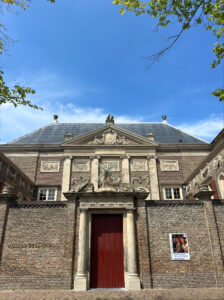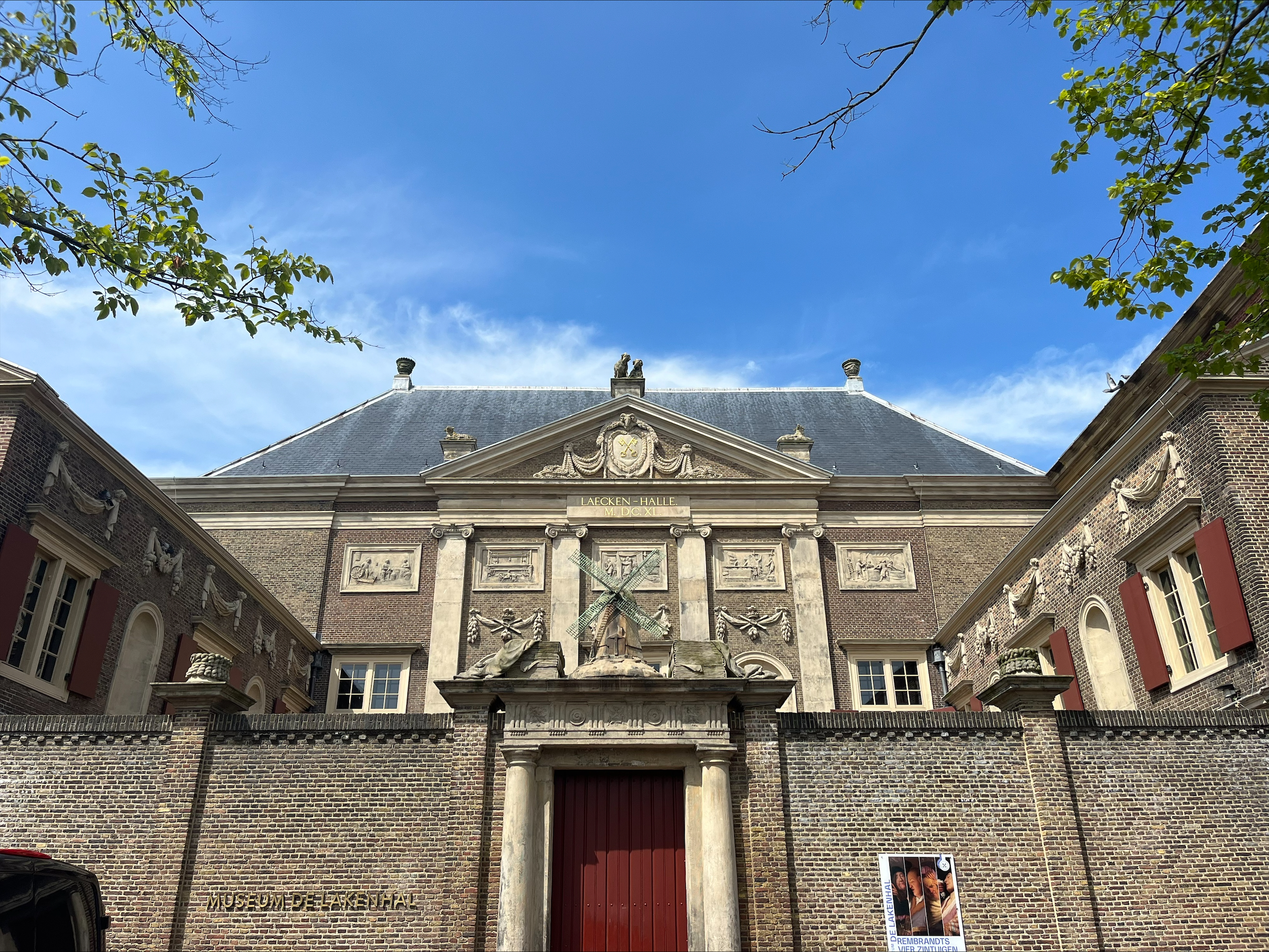Actualiteit
Looking Back: An Unforgettable Internship at Museum de Lakenhal
By Titia Janssen – Honours student Art History
Have you ever wondered what it would be like to intern at a museum? Let me take you through my experience over the past three months at Museum de Lakenhal. As a student of art history, this internship offered a unique opportunity to closely experience the life of a curator. For four months, I had the privilege to shadow Janneke van Asperen, curator of old art at Museum de Lakenhal.
My main project during this internship was the permanent redesign of the Bakker Korff Room. My thesis on Alexander Hugo Bakker Korff provided the impetus for this project. I heard through the grapevine that the museum planned to redevelop the room. I offered my assistance, and they gladly accepted it!
My thesis focused mainly on the humor in Bakker Korff’s works, an approach that Janneke van Asperen also intended to use for the redesign. The idea was to make the room more appealing to the public, and emphasizing humor naturally contributed to this.
Firstly, I had the opportunity to brainstorm which artworks would be interesting to exhibit. It was important to carefully consider the condition of the works to determine if they were suitable for display. This was assessed by the conservation and management staff. Subsequently, Janneke gave me the exciting task of creating ‘vlekkenplannen’—drawings of the room walls with a layout indicating where each work should be hung.
This drawing has now been implemented and can be admired in the Bakker Korff Room! If you are familiar with Museum de Lakenhal, you may know they use room sheets in spaces where text panels cannot be hung. These sheets highlight specific paintings further. For the Bakker Korff Room, I was involved in selecting which paintings would be interesting to highlight and wrote texts for them. I highlighted several works emphasizing the humor in his art. In addition to writing the room sheet texts, I also assisted in drafting the wall text and short texts in the drawers of the cabinet.
with Museum de Lakenhal, you may know they use room sheets in spaces where text panels cannot be hung. These sheets highlight specific paintings further. For the Bakker Korff Room, I was involved in selecting which paintings would be interesting to highlight and wrote texts for them. I highlighted several works emphasizing the humor in his art. In addition to writing the room sheet texts, I also assisted in drafting the wall text and short texts in the drawers of the cabinet.
In addition to gaining practical experience in setting up a museum room, I also learned a great deal about organizing exhibitions by attending various meetings during my internship. Planning an exhibition often begins years in advance. A curator develops a storyline and conducts thorough scientific research on the subject over these years, which ultimately forms the basis of the exhibition.
Various meetings are held focusing on different relevant aspects of exhibition preparation. There are practical meetings where topics such as fundraising are discussed. It is crucial here to determine which funds need to be applied for and which aspects of the exhibition they could finance. Another important topic, of course, is obtaining loans: which works do we want to show and where are these works located? Are private owners or other museums willing to lend their works?
In terms of sustainability, efforts now primarily focus on potential loans in the immediate vicinity before expanding the search further afield. Sometimes, efforts are made to locate works whose whereabouts are unclear, possibly known only from a black-and-white photograph. In such cases, the curator utilizes their extensive network to locate the work. It can happen that a work suddenly appears at the last minute, which always creates excitement.
There are also several meetings about the content of the exhibition, focusing on determining the storyline. This can also be relevant for fundraising efforts. It is important to choose a storyline that appeals to as wide an audience as possible and attracts as many visitors as possible. The development of the storyline often occurs in collaboration with the public affairs department, considering how best to communicate the story to the public.
In addition to redesigning the Bakker Korff Room and attending various meetings, I also wrote public texts for the museum’s website about new acquisitions and conducted a small provenance research. These tasks provided me with a broader perspective on the versatility of museum work.
Furthermore, I had the opportunity to observe activities in the depot, such as restorations and art transports. I attended meetings on sustainability in the museum, a highly topical subject. The work of a curator proved to be incredibly diverse and dynamic.
In October, I will have the opportunity to give a lecture on the redesign of the Bakker Korff Room. This is an exciting opportunity to share my experiences and inspire others with what I have learned.
All in all, this internship was an unforgettable experience. So, if you are considering interning at a museum, I highly recommend it. It is an opportunity to put your theoretical knowledge into practice and gain a deeper appreciation for the work that happens behind the scenes of a museum. Who knows, you might soon find yourself at Museum de Lakenhal!

